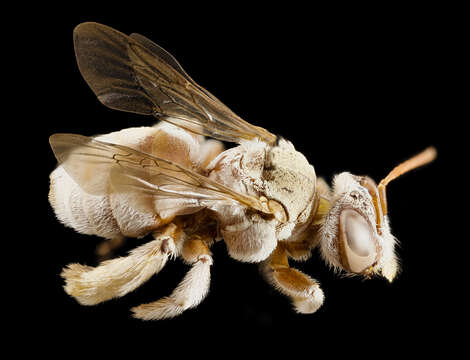Tarsalia persica, f, iran, angle_2014-08-14-14.06.39 ZS PMax

Description:
Tarsalia persica, Persian Asymmetric bee, collected in Iran. ~~~~~~~~~~{{{{{{0}}}}}}~~~~~~~~~~ All photographs are public domain, feel free to download and use as you wish. Photography Information: Canon Mark II 5D, Zerene Stacker, Stackshot Sled, 65mm Canon MP-E 1-5X macro lens, Twin Macro Flash in Styrofoam Cooler, F5.0, ISO 100, Shutter Speed 200 Further in Summer than the Birds Pathetic from the Grass A minor Nation celebrates Its unobtrusive Mass. No Ordinance be seen So gradual the Grace A pensive Custom it becomes Enlarging Loneliness. Antiquest felt at Noon When August burning low Arise this spectral Canticle Repose to typify Remit as yet no Grace No Furrow on the Glow Yet a Druidic Difference Enhances Nature now -- Emily Dickinson Want some Useful Links to the Techniques We Use? Well now here you go Citizen: Basic USGSBIML set up: www.youtube.com/watch?v=S-_yvIsucOY USGSBIML Photoshopping Technique: Note that we now have added using the burn tool at 50% opacity set to shadows to clean up the halos that bleed into the black background from "hot" color sections of the picture. www.youtube.com/watch?v=Bdmx_8zqvN4 PDF of Basic USGSBIML Photography Set Up: ftp://ftpext.usgs.gov/pub/er/md/laurel/Droege/How%20to%20Take%20MacroPhotographs%20of%20Insects%20BIML%20Lab2.pdf Google Hangout Demonstration of Techniques: plus.google.com/events/c5569losvskrv2nu606ltof8odo or www.youtube.com/watch?v=4c15neFttoU Excellent Technical Form on Stacking: www.photomacrography.net/ Contact information: Sam Droege sdroege@usgs.gov 301 497 5840 Only seven species of Asymmetric Bees have been described, but they are poorly known, with few specimens and no nests having been discovered. They occur from the Mediterranean to India and are called Asymmetric Bees because of the male genitalia which have some parts more strongly developed on one side than the other. The reasons for this are unknown, but presumably, unlike the case with humans, females prefer asymmetrical males. This particular species is known only from Iran and unlike the other species we are aware of, the skin or integument of the exoskeleton is a lovely dark pink-red that offsets the bright white hairs. Asymmetric bees belong to a group that has a complicated geographic and taxonomic history. Melittologists (people who study bees) have long disagreed as to whether they are closely related to another Old World genus – the Short-Tongued Long-Tongued Bees from the Mediterranean Region (see page…..). Recent research suggests that they are indeed closely related although all of the closest relatives to these two genera in combination are from North and South America. Furthermore, using modern analytical techniques, it seems that the ancestor of these bees moved into Western Europe from North America via a land bridge that existed intermittently when the planet was a lot warmer than it is now, around 52 million years ago.
Included On The Following Pages:
- Life (creatures)
- Cellular (cellular organisms)
- Eukaryota (eukaryotes)
- Opisthokonta (opisthokonts)
- Metazoa (Animal)
- Bilateria
- Protostomia (protostomes)
- Ecdysozoa (ecdysozoans)
- Arthropoda (arthropods)
- Pancrustacea
- Hexapoda (hexapods)
- Insecta (insects)
- Pterygota (winged insects)
- Neoptera (neopteran)
- Endopterygota (endopterygotes)
- Hymenoptera (wasps, bees, and ants)
- Apocrita (wasp)
- Aculeata
- Apoidea (bees & apoid Wasps)
- Anthophila (bee)
- Apidae (honeybees, bumblebees, and relatives)
- Apinae (Honey, Bumble, Long-horned, Orchid, and Digger Bees)
- Tarsaliini
- Tarsalia
- Tarsalia persica
This image is not featured in any collections.
Source Information
- license
- cc-publicdomain
- copyright
- USGS Bee Inventory and Monitoring Lab
- photographer
- USGS Bee Inventory and Monitoring Lab
- original
- original media file
- visit source
- partner site
- USGS Bee Inventory and Monitoring Lab
- ID


